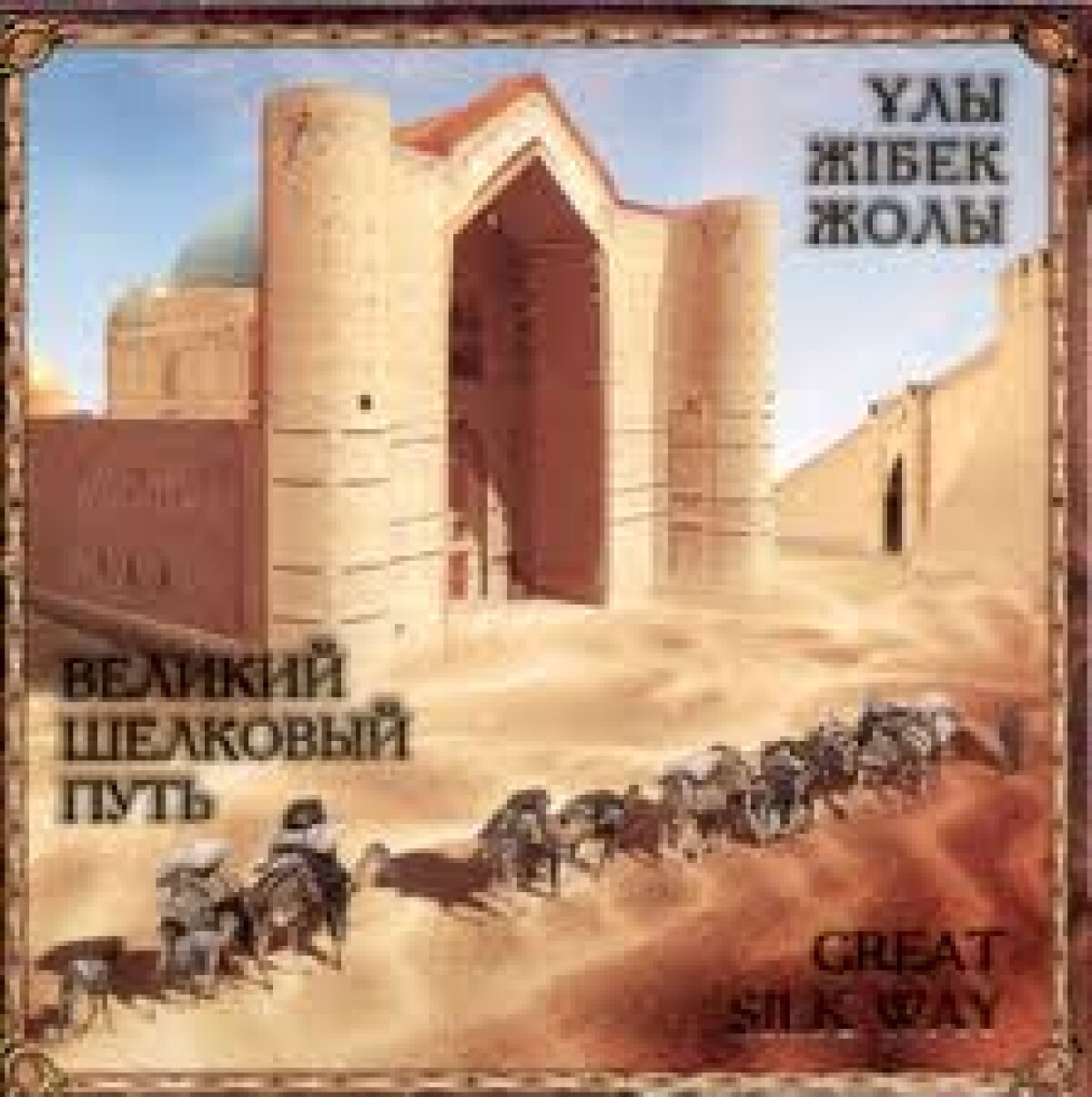
The Great Silk Road in Kazakhstan. The city and the steppe.
Begins of contacts and exchange links back to the III-II millennium BC. These relations were established in connection with the mining of lapis lazuli in the mountains of Badakhshan and jade in the upper reaches of the river. Yarkendara , near Hotan.
In the middle of the I millennium BC became operational Steppe Route , which stretches from the Black Sea to the banks of the Don, then in the land Savromats in the Southern Urals , to the Irtysh and , further, to the Altai, the country agripeev inhabiting the area of the Upper Irtysh and Zaisan . In this way spreading silk, furs and skins , Iranian carpets, articles of precious metals .
In the spread of precious silks participated nomadic Sakas and Scythians, through which the outlandish to the time the merchandise fell into Central Asia and the Mediterranean.
In the middle in II century BC Silk Road begins to function as a regular diplomatic and trade artery .
In the II-V centuries Silk Road , if you follow the east, began in Chang'an - the ancient capital of China and came to the crossing of the Yellow River in Lanzhou , further along the northern spurs of Nan Shan to the western edge of the Great Wall of China , to the outpost Jasper gate. Here, the single road split bordering the north and south of the Takla - Makan . North went through the oasis of Hami , Turpan , Beshbalyk , Shiho to the valley . Or , the average led from Zhang Qian to Karashahr , Aksu and through Bedel Pass to the southern shore of Issyk - Kul - in Dunhuang , Khotan , Yarkand to Bactria , India and the Mediterranean - the so -called " southern route ". "Northern Route" came from Kashgar in the Fergana and then through Samarkand, Bukhara , Merv and Hamadan in Syria.
In the VI-VII centuries is the busiest route , which took place from China to the west across the Seven Rivers and Southern Kazakhstan . This movement paths can be attributed to several factors . In - the first in the Seven Rivers rates were Turkic Hagan , who controlled the trade routes through Central Asia . In - the second , the road through the Fergana in VII. become dangerous from - for strife . Third, the rich Turkic Kagan and their environment have become major consumers of goods overseas .
Silk Road passed through the basic number of embassy and trade caravans in the VII-XIV centuries . For centuries, it underwent changes : some areas of special concern, while others are dying out , and the city and the commercial stations they fell into decay . Thus, in the VI-VIII centuries was the main route Syria - Iran - Central Asia - South Kazakhstan - Talas Valley - Chu Valley - Issyk - Kul Basin - East Turkestan . An offshoot of this road , or rather another route out to the track from Byzantium through Derbent in the Caspian steppes - Mangishlak - Aral Sea - Southern Kazakhstan . He walked around the Sassanian Iran, as opposed to when he was imprisoned trade - diplomatic alliance in the West- Khanate of Byzantium. In the IX-XII centuries . This route was used with less intensity than the one that came through Central Asia and the Middle East , Asia Minor, Syria , Egypt and Byzantium , and in XIII-XIV centuries revived again . The political situation on the continent determines the choice of routes diplomats , merchants and other traveling people.
During the existence of the state of Saks , and Usuns Kangüy in II. BC. e . - The first half of the I th. n . e . When the Silk Road is actively functioning in Kazakhstan penetrate Roman glass and coins , Chinese silk , mirrors and lacquer ware, European fibulae - buckles and stones - Signet of Sasanian Iran. During this period, in the valleys of the Chu , Talas and Syr formed urban centers , which were the forerunner of the agricultural settlements , surrounded by walls and towers .
In the second half of the VI in the Seven Rivers , Southern Kazakhstan became part of the Turkic Khanate , a vast nomadic empire that stretched from Korea to the Black Sea. At the end of the VI revitalization of the Silk Road is the area su, and southern Kazakhstan, which played an important role in the development of urban culture in the region. In the Seven Rivers , he has stimulated the emergence of a number of urban centers in the south of Kazakhstan contributed to the rapid growth of cities . Silk Road through Central Asia , Kazakhstan and South Seven Rivers functioned until the XIV century , yet civil strife and war, leading to the deaths of urban culture and the development of sea routes to China did not lead to its extinction.
